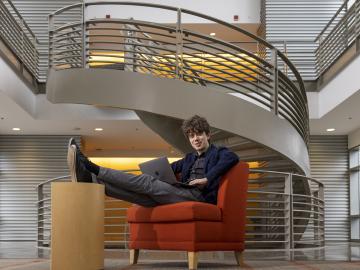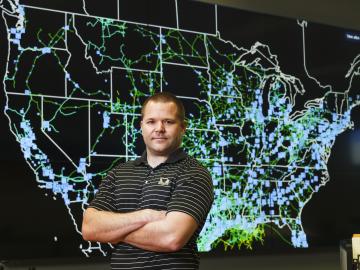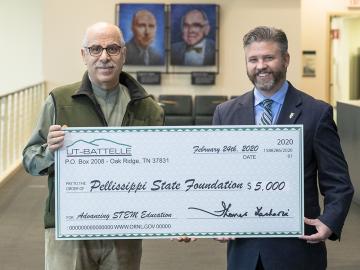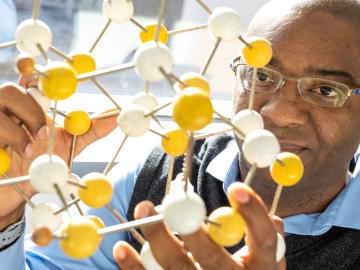
Filter News
Area of Research
News Type
Date
News Topics
- 3-D Printing/Advanced Manufacturing (15)
- Advanced Reactors (3)
- Artificial Intelligence (3)
- Bioenergy (7)
- Biology (2)
- Biomedical (8)
- Biotechnology (1)
- Buildings (1)
- Chemical Sciences (5)
- Climate Change (4)
- Composites (1)
- Computer Science (14)
- Coronavirus (13)
- Critical Materials (2)
- Cybersecurity (1)
- Decarbonization (1)
- Energy Storage (9)
- Environment (10)
- Exascale Computing (1)
- Fusion (3)
- Grid (2)
- High-Performance Computing (2)
- Isotopes (5)
- Machine Learning (3)
- Materials (2)
- Materials Science (18)
- Mathematics (1)
- Microscopy (4)
- Molten Salt (1)
- Nanotechnology (12)
- National Security (2)
- Neutron Science (17)
- Nuclear Energy (10)
- Physics (12)
- Polymers (4)
- Quantum Science (6)
- Security (2)
- Space Exploration (1)
- Summit (9)
- Sustainable Energy (11)
- Transformational Challenge Reactor (2)
- Transportation (5)
Media Contacts

Researchers at the Department of Energy’s Oak Ridge National Laboratory have used Summit, the world’s most powerful and smartest supercomputer, to identify 77 small-molecule drug compounds that might warrant further study in the fight

Joe Paddison, a Eugene P. Wigner Fellow at the Department of Energy’s Oak Ridge National Laboratory, believes there’s more information to be found in neutron scattering data than scientists like himself might expect.

Nils Stenvig has always had an interest in solving big problems. That desire drove his focus on electrical engineering in college and eventually led him to Oak Ridge National Laboratory, where today he’s using his expertise to better understand the world’s largest machine—the electrical grid.

OAK RIDGE, Tenn., Feb. 27, 2020 — Researchers at Oak Ridge National Laboratory and the University of Tennessee achieved a rare look at the inner workings of polymer self-assembly at an oil-water interface to advance materials for neuromorphic computing and bio-inspired technologies.

UT-Battelle, the managing contractor of Oak Ridge National Laboratory for the US Department of Energy, has donated $5,000 to the Pellissippi State Community College Foundation to advance STEM education for community college students across East Tennessee.

Valentino (“Tino”) Cooper of the Department of Energy’s Oak Ridge National Laboratory uses theory, modeling and computation to improve fundamental understanding of advanced materials for next-generation energy and information technologies.

OAK RIDGE, Tenn., Feb. 19, 2020 — The U.S. Department of Energy’s Oak Ridge National Laboratory and the Tennessee Valley Authority have signed a memorandum of understanding to evaluate a new generation of flexible, cost-effective advanced nuclear reactors.

As a reactor physics nuclear engineer, Ben Betzler leverages and develops computational methods to solve questions across nuclear energy—whether it’s finding the best design of a reactor core or repurposing an old tool for a new analysis.
A team of scientists led by Oak Ridge National Laboratory found that while all regions of the country can expect an earlier start to the growing season as temperatures rise, the trend is likely to become more variable year-over-year in hotter regions.

Energy storage startup SPARKZ Inc. has exclusively licensed five battery technologies from the Department of Energy’s Oak Ridge National Laboratory designed to eliminate cobalt metal in lithium-ion batteries. The advancement is aimed at accelerating the production of electric vehicles and energy storage solutions for the power grid.


